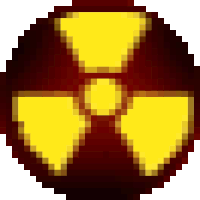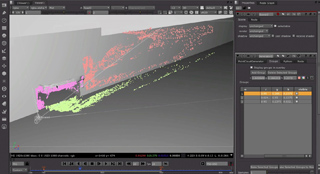
#Nuke denoise movie
Sam Chynoweth, colorist at Animal Logic, recently graded The LEGO Batman Movie on Baselight 5.0. NAB visitors can explore the new functionality in a number of demonstration areas, including on Baselight ONE, the compact system designed for any size of color suite, Baselight TWO, the all-around solution, and Baselight X, which provides ultra-high bandwidth for the most demanding projects.

5.0 also attempts to blur the line between traditional color correction and VFX with new features such as paint, perspective tracking, warping, depth keying, relighting and more.

Version 5.0 reportedly introduces a new Base Grade that accurately mimics the way the eye sees color to yield a more natural feel, that aims to give wsmooth, consistent changes in the controls. “And, importantly, color and artistic intent is accompanying all deliverables precisely and with minimum effort, be it for HDR and SDR or even 360 VR grading.” “We are delivering 5.0 everywhere, bringing a new level of color control and creative possibilities from the very start of a production right to the final deliverables,” said Wolfgang Lempp, CEO of FilmLight. Longtime users will benefit from a consistent and familiar user experience, from the flagship Baselight color grading and finishing system, through Baselight Editions, to Daylight and the new on-set application, Prelight. Useful if you have high frequency textures that you need to touch up and here’s a great example by Richard Frazer on the use of Fractal blur which uses procedural noise to break the matte edges.ģ) As the initial base like creating a smoky pattern with roto, distorting images using the iDistort node or grayscale map for Nuke particle emitters.FilmLight has announced that it will demonstrate its version 5.0 color tools at NAB 2017. Something like “frame/2” (without the quotation marks) should suffice for a quick test.Ģ) To break up smooth area/edges for more natural blending. Common tricks with Noiseġ) You want to add a simple expression to the Z parameter. Again, same thing can be done using the Grade node. Gamma: Controls the overall gamma of the noise. You can still further tweak it through a Grade node if desired. Gain: Controls the overall gain of the noise. Lacunarity: Adjust the size of the smaller noise pattern. Be warned that when lacunarity is set to 0, the octaves value will have zero visible result.

For me, it is a way to adjust the scale of the lacunarity. Octaves: The tooltip mentioned that it controls the amount of Perlin noise function to add. You want to use expression to drive the animation or you can keyframe it manually. Z: This control the animation/evolution of the noise.

You can toggle it to adjust both the X and Y separately. In case you accidentally end up here instead of the Denoise tips, click here to go to Nuke Tips – Denoise Footage.īy default, Nuke will default to fBm (fractional Brownian motion) noise type with the turbulence as the other option. I’ll be covering the basics of the Noise in Nuke and the typical use in my workflow. If you ever need to generate procedural noise, the Noise node in Nuke can assist you in creating noise for use in your project. Time to pollute your Nuke comp with Noise


 0 kommentar(er)
0 kommentar(er)
